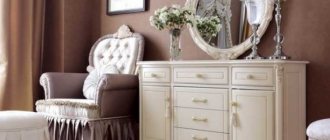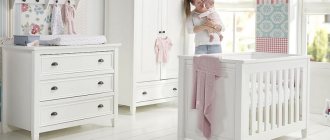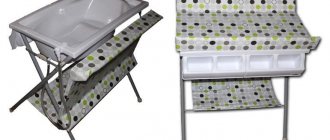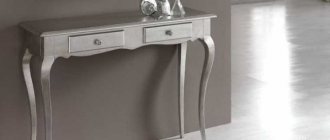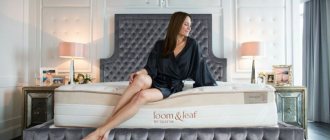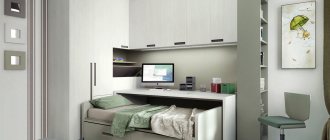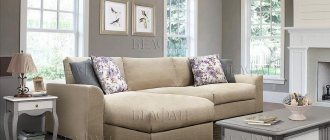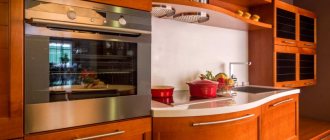For a student of any age, the main object in the room is a desk. He spends a lot of time on it, and not only school performance, but also the child’s health depends on this piece of furniture.
A desk for a schoolchild with shelves, drawers, cabinets - a variety of models.
The following models of writing desks are available:
- Orthopedic. It is intended for both work and correction of spinal curvatures and posture correction. In this model, a special recess is made in the tabletop, which does not allow the child to roll over, and therefore he sits upright.
- Transformer. In this model, it is possible to adjust the height, angle of the footrests, and table top.
- Children's computer desk. This is a 2 in 1 table with blocks for a keyboard and system unit. You can do homework or play computer games behind it. But you just need to make sure that the child gives preference to the first lesson.
- "Growing" table. This option is intended for schoolchildren of any age. All thanks to a system that allows you to “grow” the size of the desk as the child grows.
- School corner. It contains hanging cabinets, shelves, cabinets, and built-in lighting. This is a whole mini-world that was created so that the child is not distracted from his studies and feels comfortable.
- Folding/unfolding. This model is good for small rooms. Before classes, the table top is folded out, and at the end it is raised.
How to draw a desk
The holes for them are made in pairs at different heights, which allows, if necessary, to change the level of their location.
It’s easier to make side cabinets mounted on top of the vertical end panels of the secretary. To do this, two frames are made to the size of the side panel: one is attached to the panel, the second, covered with a sheet of plywood, is attached to the first on a piano hinge, since it will serve as a pencil case door. Inside there are plastic pegs, pins (can be just screws, nails) or narrow strips, depending on the purpose. The door frame is held in the closed position by a magnetic latch; The same or furniture latches are installed for hinged panels.
The lower part of the mini-wall - the cabinet - is structurally similar to the upper one: the same four panels from furniture panels - two horizontal and two. vertical, connected with spikes, and also with metal corners from the inside. Only the width of all the panels is noticeably larger: due to this, the cabinet is slightly extended from under the secretary and provides additional support for its hinged lid. The back wall of the cabinet is made of plywood or hardboard. Inside there are shelves made of boards* On the front side, the cabinet is closed with two sliding doors made of plywood.
The assembled cabinet rests on a stand with legs, formed by longitudinal and transverse bars, cut halfway into the legs and fastened to them with screws and glue. The rigid frame obtained in this way can be used independently or attached with screws to the bottom panel of the cabinet.
The external finish of the secretary and all its parts depends on the materials used; in our version with furniture panels - it is sanded and coated with light furniture varnish.
After assembly work and installation of all the main parts, the surface of the secretary is carefully sanded and finally varnished.
V. STRASHNOV, architect
Based on materials from Kutuzova V.V.
Material
Tables are made from various materials - natural and artificial:
- Chipboard. Due to its reasonable price and wear resistance, this material has gained a strong foothold in the market. It is harmless, but if the production technology is not followed, after 5-7 years it can release formaldehyde resins, which is harmful to the health of the child.
- MDF. This is a material without synthetic excess, from a natural composition. It is waterproof and very durable. Its price is higher due to its naturalness.
- Natural wood. Solid wood is the most natural and high-tech option. Such models are durable and high quality. Their price is higher than previous options.
- Plexiglas. This may be the covering of the countertop or the countertop itself is made of this material. This is a good option for light floors.
Child table material
Most parents prefer desks made from chipboard only because of its low cost. However, it must be remembered that this material contains toxic elements that can harm the health of the child.
At the same time, chipboard has a low service life, which means that in a few years you will again be looking for another desk for your child.
The best material for a desk is natural wood, but not all parents can buy such a desk. However, as an alternative, you can buy a table made of MDF; such a table will be slightly inferior in quality to a table made of natural wood, but its cost will be significantly less.
Choosing a table for a schoolchild
When going to buy a desk for a child, parents should focus on quality and safety, and only then on beauty and design.
The table is selected according to the child’s height. During classes, the child's feet should be firmly on the floor. In this case, the angle of the bent knees should be approximately 90 degrees, and the elbows should be located on the tabletop. It should be large in size so that all the necessary accessories can be easily located here.
When purchasing a table, you should read the quality certificate to ensure that the product is environmentally friendly. If it is not possible to change the table as the child grows, it is better to consider the option of a “growing” table.
The table must be equipped with cabinets and shelves, and most importantly, a chair. It, like the table, must correspond to the height and age of the child. For convenience and to ease the load on the child’s back, the chair should have a backrest. Soft options are best.
It is advisable to hear the child’s opinion when purchasing all these items. After all, he will have to study in this place for more than one month and this will be his own corner.
Correct seating at the table
The child’s health largely depends on the technical parameters and features of the table. For example, a child should have correct posture and position at a desk; in a sitting position, the load on the neck, spine and back should be evenly distributed. All these requirements must be met for every desk without exception.
However, when choosing a children's desk, parents need to pay attention to some technical characteristics of the table:
- table height
- table top length
- tabletop width
- table lighting
- compactness and convenience
At the same time, most parents prefer a universal desk “transformable table” that is capable of changing its technical dimensions. This is certainly very convenient, since as the baby grows up, parents will not need to buy a new desk for their child again.
Such a table can serve a child almost until the child grows up.
Location
The ideal location for a desk is considered to be an area near the window. Natural light is a great option for a child. You can build the tabletop into the window sill, which will significantly save space. If there is a heating system underneath, then you should abandon this idea. As an exception, the heating radiator has individual temperature control.
There are bed-loft systems. There is a table under the bed. The result is a children's mini-office.
The corner model can also be used for zoning a room. But in this case, the table should not interfere with the child while playing.
